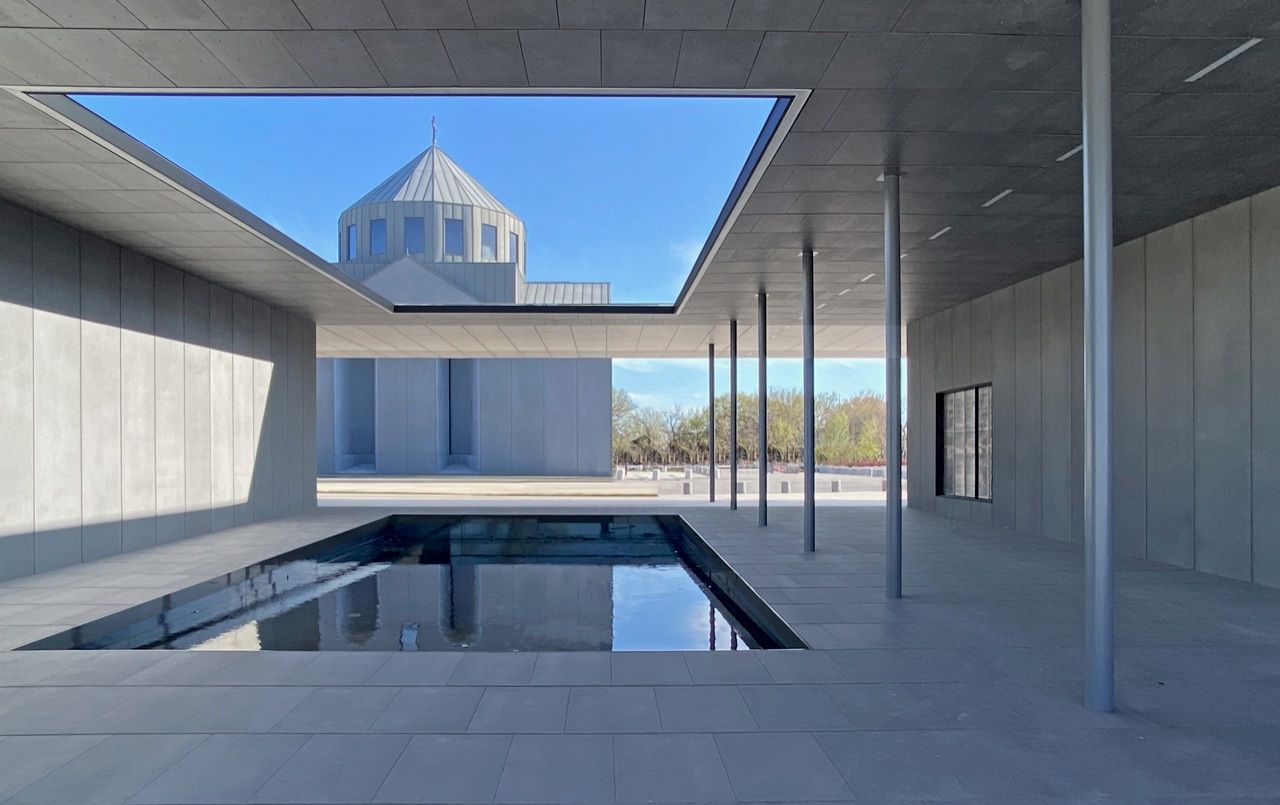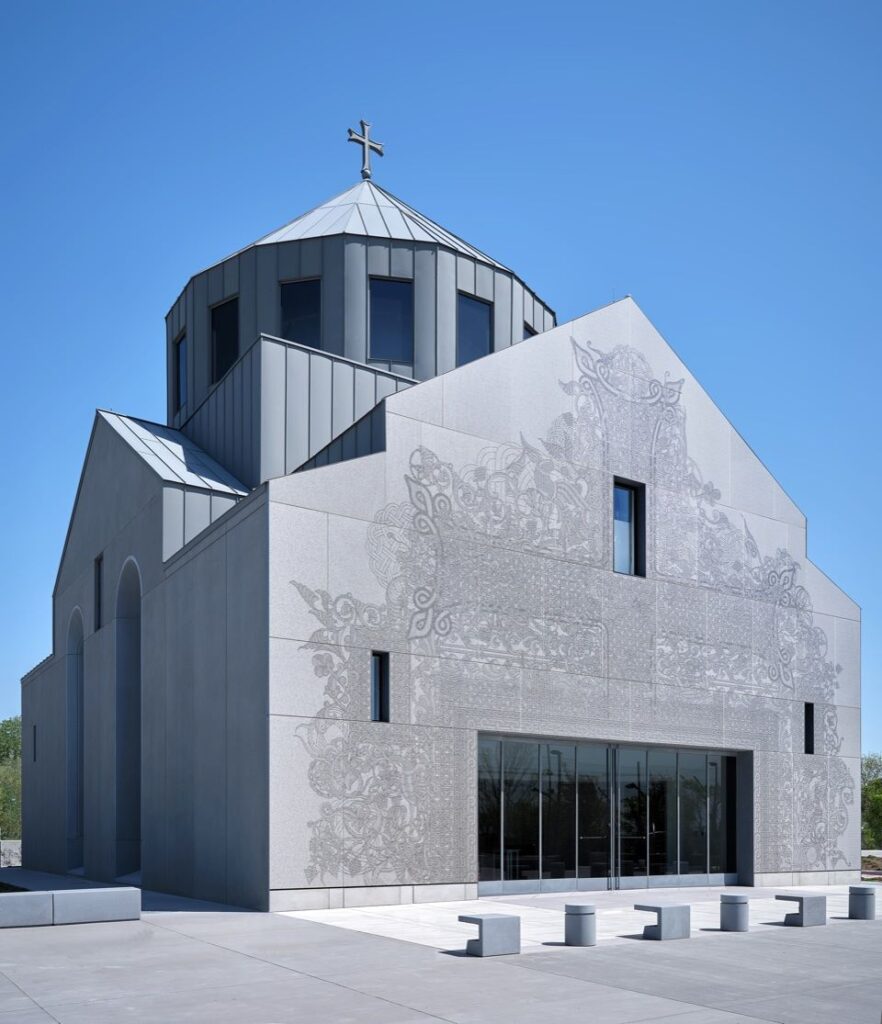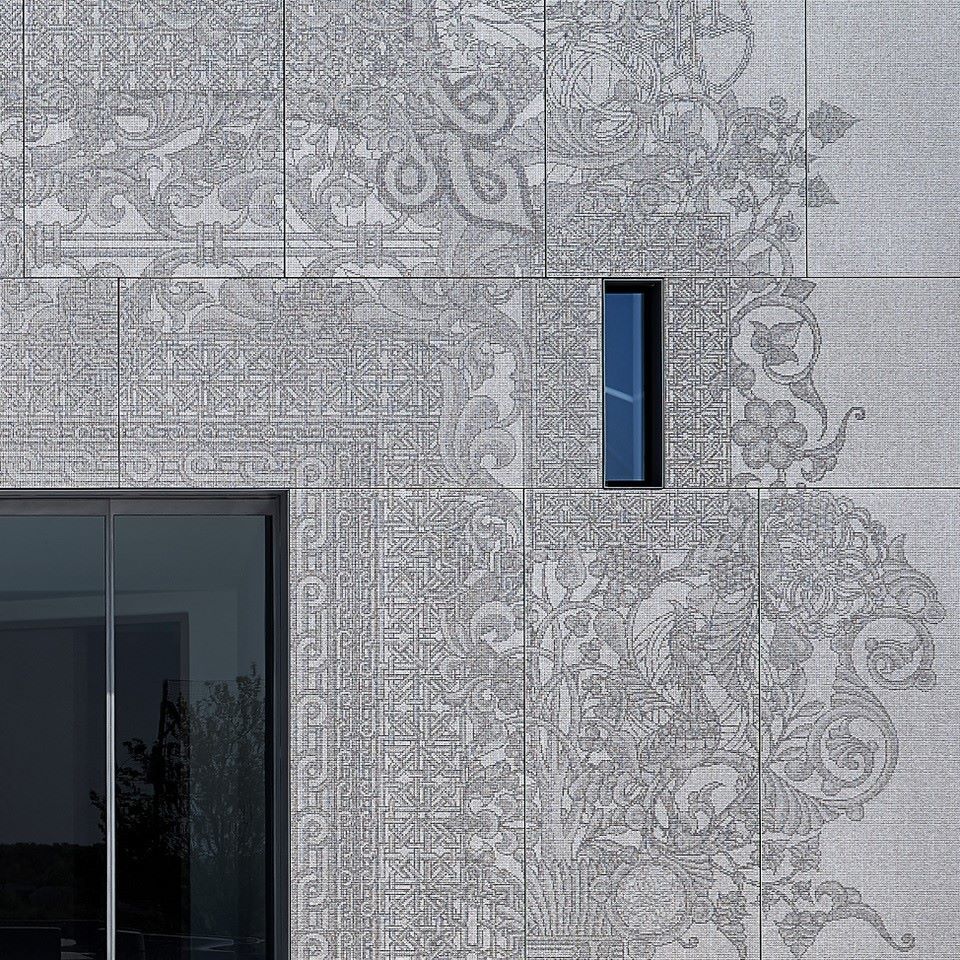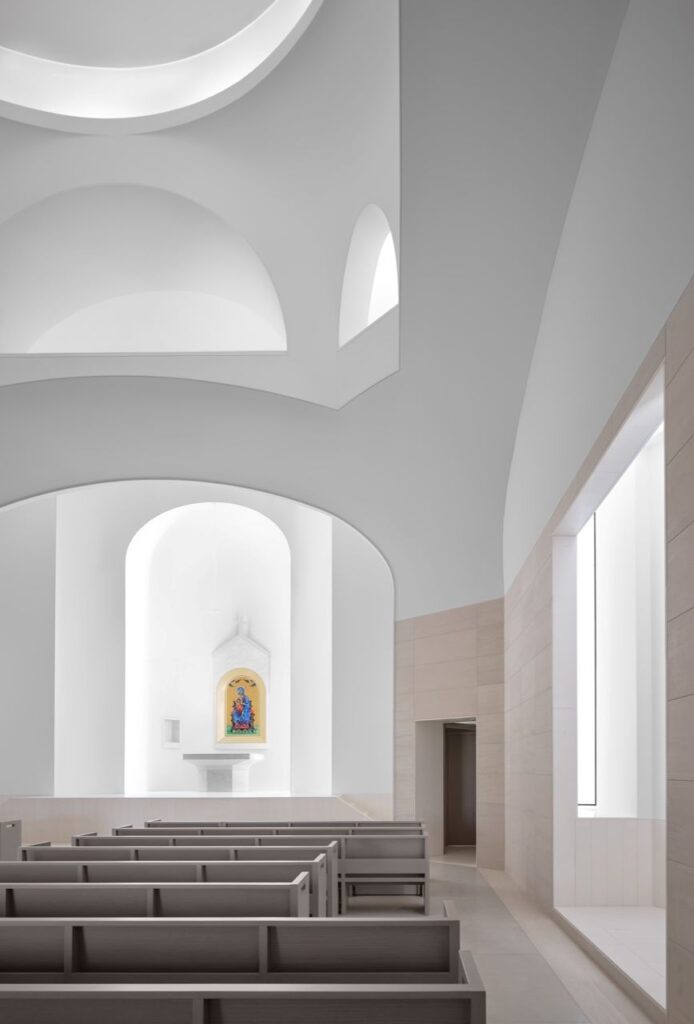The new Saint Sarkis Armenian Church, in Carrollton, Texas, was designed by New York architect David Hotson and is modeled on the ancient Armenian church of Saint Hripsime which still stands near Armenia’s modern capital of Yerevan.
Working with long-time collaborator architect Stepan Terzyan, Hotson combined Armenia’s ancient architectural and artistic traditions with contemporary digitally-driven design and fabrication technologies.
The total interior floor area for the entire complex is about 32,000 square feet.

Western Memorial Façade
The most striking of these contemporary innovations is the west façade of the church, which serves as a subtle but powerful memorial to the 1.5 million victims of the 1915 Armenian genocide.
The façade depicts a traditional Armenian cross or “tree of life” composed of interwoven botanical and geometrical motifs drawn from Armenian art. As a visitor approaches the façade, the overall façade design dissolves into 1.5 million tiny icons or pixels, derived from the circular emblems that recur throughout the Armenian artistic tradition. The individual pixels were generated by a computer script to make every pixel unique. Like 1.5 million snowflakes, each individual pixel represents one of the 1.5 million individuals who perished in the 1915 Armenian genocide, including members of the families that belong to the Saint Sarkis congregation.

Collaboration with Fiandre Architectural Surfaces
To implement the façade, Hotson collaborated closely with Fiandre (Iris Ceramica Group), the innovative architectural surfaces manufacturer that has developed the revolutionary DYS (Design Your Slab) system that allows exterior grade, UV-resistant custom printing at extremely fine resolution on Fiandre’s large-format porcelain rain screen panel materials. The façade was installed by Graniti Vicentia Façades utilizing the proprietary ventilated façade system of Granitech – the division of Iris Ceramica Group dedicated to Ventilated Façade Systems. This is the first time that exterior grade high-resolution digital printing technology is used featuring such a complex and sophisticated façade design to optically engage the viewer in a series of visual scales nested inside each other. In addition to the memorial façade, Fiandre supplied the full range of porcelain interior and exterior floor, wall and soffit finishes used throughout the Saint Sarkis Campus.

The Church Exterior
The solid gray mass of the church exterior, rendered in modern materials, references the monolithic sculptural character of ancient Armenian churches which were constructed entirely of stone. The juxtaposition of the monochrome architecture against the richmulticolored vegetation, envisioned and implemented by landscape designer Zepur Ohanian, recreates the powerful relationship between monolithic architecture and verdant landscape that is typical of ancient Armenian churches.

The Church Interior
Upon stepping into the church through the memorial façade, the visitor emerges into the luminous sanctuary, a composition of light-filled spatial volumes modeled on the interior of Saint Hripsime. Concave light coves sculpted into the exterior reflect the powerful Texas sunlight indirectly into the interior space, resulting in an ethereal quality of illumination. The doubly-curved plaster vaults that shape the interior space were fabricated in glass-fiber-reinforced gypsum directly from the architect’s computer model, through an innovative process developed by the Toronto-based manufacturer Formglas. The interior vaults are smooth and scaleless, with no visible lighting fixtures, airconditioning registers, or other contemporary technical details to interrupt the luminous spatial figure, which carries the memory of the 1,400 sanctuary of Saint Hripsime. The church is heated and cooled with a displacement climate control system that introduces conditioned air at low velocity through floor registers located under the pews. The result is a silent interior— without any mechanical vibration or the ambient sound of a conventional high-velocity air conditioning system— providing a silent backdrop for the reverberant acoustics of traditional Armenian choral music.


